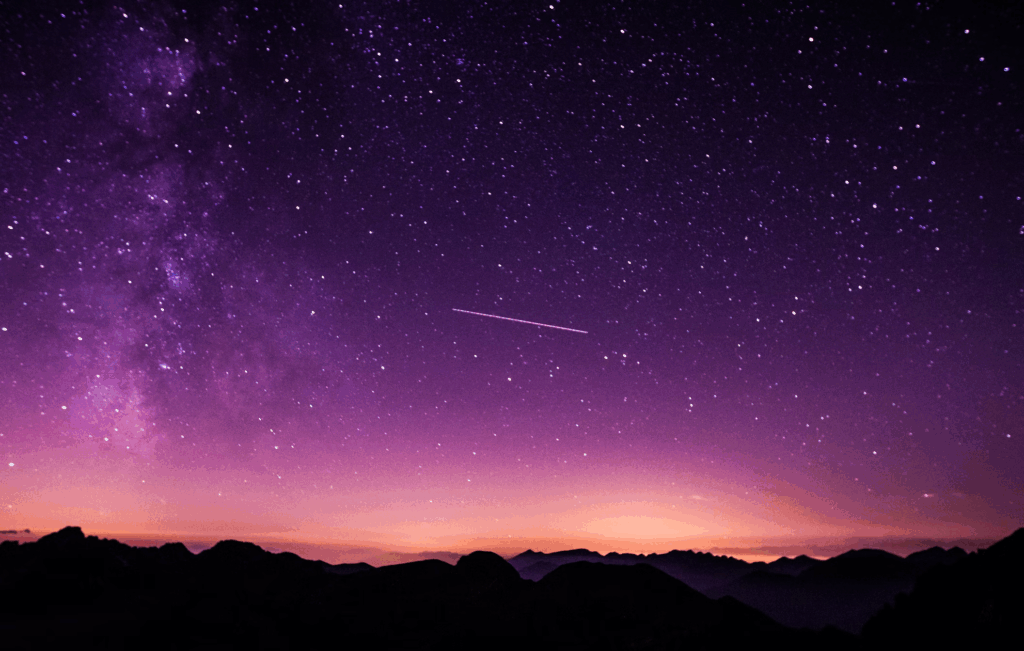A Celestial Show with a Twist: The 2025 Perseid Meteor Shower
This August, the night sky holds a familiar yet mysterious spectacle: the Perseid meteor shower. Every year, Earth sails through the trail of debris left by comet 109P/Swift-Tuttle, lighting up the heavens with hundreds of streaking meteors.
But in 2025, an almost-full moon casts a silvery glow over the sky, muting the usual brilliance. Most meteors will be subdued, yet occasional fireballs—brighter than Venus—could blaze across the darkness, creating moments that feel almost deliberate, almost magical.

A Moonlit Challenge
The 2025 Perseids peak on August 12-13, coinciding with a waning gibbous moon shining at 86% illumination. Normally, observers might count up to 100 meteors per hour, but this year, expect only 10-15 visible to the naked eye. The silver glow will wash out faint meteors, yet the brightest fireballs will still dazzle, appearing bold and dramatic against the lunar light.
When and Where to Watch
NASA recommends starting your vigil around 10 p.m., with the predawn hours of August 13 offering the peak activity. Early evening may reveal “earthgrazers,” long, slow streaks skimming the horizon, while the late-night hours (1–5 a.m.) are prime for catching brighter Perseids. Aim toward the radiant near Eta Persei in the constellation Perseus—but remember, meteors can appear anywhere, darting across the sky in fleeting brilliance.
Spotting Perseids
A simple trick: trace a meteor’s path backward. If it leads to Perseus, you’ve found a Perseid. For dramatic, elongated trails, position yourself roughly 40 degrees away from the radiant. Want to measure distances in the sky? Hold your fist at arm’s length—about 10 degrees—and stack four fists to map the area.
Why Perseids Are Extraordinary
These meteors come from comet Swift-Tuttle, last seen in 1992 and not returning until 2126. Sand-sized fragments enter Earth’s atmosphere at 37 miles per second, igniting in a fleeting blaze of light. For centuries, humans have been mesmerized by these streaks—known in some cultures as the “Tears of St. Lawrence,” peaking around August 10, the saint’s feast day.
Maximizing Your Viewing Experience
Escape city lights for the darkest skies.
Give your eyes 20–30 minutes to adjust.
Hide the moon behind trees or buildings to reduce glare.
Reclining chairs, blankets, and warm layers keep you comfortable.
For photographers: wide apertures, high ISO, and long exposures capture meteor trails beautifully.
Patience and Reward
Even with the moon’s interference, the brightest meteors will shine with unforgettable intensity. Peak night is fleeting—August 12-13—but the fireballs that streak across the sky are worth the wait.
The Magic of Perseids
Lying under the stars and watching fragments of a comet burn millions of miles from Earth connects us with generations who have gazed skyward in awe. Though 2025’s moon may dim the usual spectacle, the Perseids still promise fleeting, magical moments for those willing to look up and embrace the night.
Final Thoughts
This year’s Perseid meteor shower is a reminder that even familiar celestial events hold surprises. A bright moon may challenge observers, but fireballs and brilliant meteors will still shine through. With preparation, patience, and an eye toward the northeastern sky, the 2025 Perseids invite us to witness the beauty, unpredictability, and timeless wonder of the cosmos. The magic is still there—hidden, fleeting, and waiting for anyone brave enough to watch.
